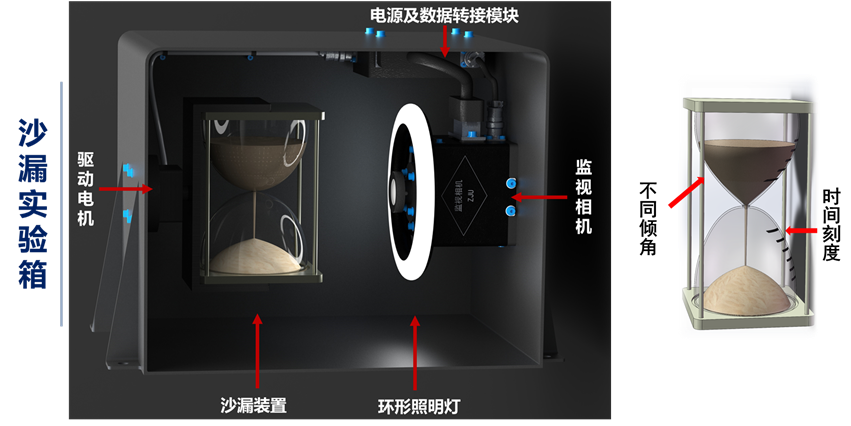On April 24, on the day of the 7th Space Day of China, the China's Lunar Exploration Project announced the winners in the creative design competition of science test payloads on the Chang'e-7 and asteroid exploration program. The plan designed by Zhang Ziran, Chen Zhaojie, Luo Peng and Yang Zihan from COSE and directed by Prof. Xu Zhihai, "Hourglass Experiment on the Moon", was successfully shortlisted in the final selection of the Chang'e 7 Science Popularization Load Creative Solicitation Competition and won the National Second Prize.

The Chang'e-7 Science Popularization Load Creative Solicitation Competition is jointly sponsored by the National Space Administration, the Ministry of Education, the Ministry of Science and Technology, the Chinese Academy of Sciences, the Central Committee of the Communist Youth League, the China Association for Science and Technology and the National Natural Science Foundation of China. The "Hourglass Experiment on the Moon", as the only program selected in Zhejiang Province, is expected to be carried in the follow-up mission.
Hourglass Experiment on the Moon
Pressure, gravity, particle size... What factors affect the speed of the hourglass flow rate? Can the falling speed be changed? Can it be calculated by scientific formula? Until now, the exact physical model of hourglass timing is still being widely debated.
One sand grain, one world. In addition to timing, the "sand" in the hourglass contains a wealth of knowledge.
Hourglass is an important tool for many scientists to study "particle flow". When sand aggregates into the hourglass, it will form a new group state of liquid-like flow, which is called "particle flow" in chemical industry, and the mechanical knowledge of "particle flow" can be applied to construction, landslide response, etc.
"We want to bring the hourglass to the surface of the moon. By conducting the hourglass experiment in the low-gravity environment on the moon, we can help to explore the principles behind the hourglass timing and explore the precise physical model of particle flow. Maybe it can contribute to accumulate application knowledge of granular materials for lunar bases in the future." said Zhang Ziran, a team member and a graduate student from COSE, ZJU.
Zhang Ziran and several classmates, under the guidance of Prof. Xui, came up with the idea of "Hourglass Experiment on the Moon", turning the "brain hole" into an engineering plan.
"It's easy to open a 'brain hole', but to make it a reality, there are many factors to consider." Zhang Ziran said. In this experiment, the hourglass experiment box contains an hourglass, a drive motor, a ring light and a surveillance camera, etc.
Compared with ordinary hourglasses, this hourglass experimental device has many special features for going to space. For example, in order to reduce the influence of the irregularity of ordinary sand grains, 0.24 mm glass beads were selected for the sand grains in the experiment. To solve the difference in air pressure between the earth and space, they also designed a vent hole smaller than the diameter of the glass bead on the bottle wall. The bottle wall itself was also a material that had been carefully selected to adapt to the space environment.

The final design is inseparable from the careful guidance of Prof. Xu. As the deputy chairman of the Space Remote Sensing Professional Committee of the Chinese Astronautical Society, Prof. Xu presided over the design and development of a series of spaceborne optical systems, which have been used in the missions of Chang'e-2, Chang'e-3, Chang'e-4 relay satellite, and Chang'e-5 test satellite. During the whole experimental project, Prof. Xu paid close attention to the progress of the scheme and provided many valuable opinions and suggestions. The students said, "Every detail from 3D modeling to the engineering of the scheme has been repeatedly scrutinized. Prof. Xu also eagerly expected the students to make every effort to bring the hourglass experiment to the practice of the lunar exploration project".
COSE, ZJU has made outstanding contributions to deep space exploration missions:
Lens of CMOS surveillance camera - Chang'e II, III and IV (2010)
Dual-resolution camera project - Chang'e-5 test star (2014)
Chang'e-4 relay star observation camera - Chang'e-4 (2018)

